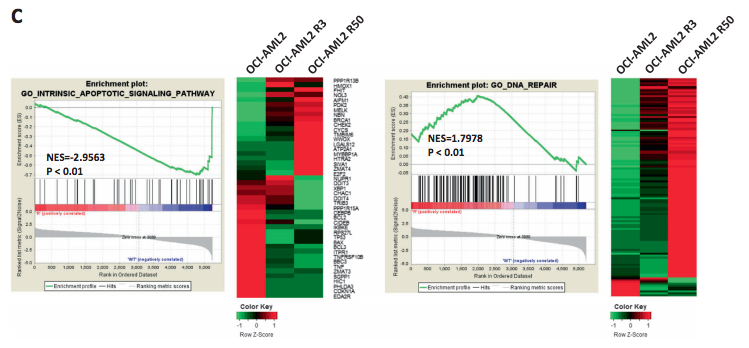 My caption 😄
My caption 😄
Histone deacetylase inhibitor targets CD123/CD47-positive cells and reverse chemoresistance phenotype in acute myeloid leukemia
Abstract
Chemoresistance may be due to the survival of leukemia stem cells (LSCs) that are quiescent and not responsive to chemotherapy or lie on the intrinsic or acquired resistance of the specific pool of AML cells. Here, we found, among well-established LSC markers, only CD123 and CD47 are correlated with AML cell chemosensitivities across cell lines and patient samples. Further study reveals that percentages of CD123+CD47+ cells significantly increased in chemoresistant lines compared to parental cell lines. However, stemness signature genes are not significantly increased in resistant cells. Instead, gene changes are enriched in cell cycle and cell survival pathways. This suggests CD123 may serve as a biomarker for chemoresistance, but not stemness of AML cells. We further investigated the role of epigenetic factors in regulating the survival of chemoresistant leukemia cells. Epigenetic drugs, especially histone deacetylase inhibitors (HDACis), effectively induced apoptosis of chemoresistant cells. Furthermore, HDACi Romidepsin largely reversed gene expression profile of resistant cells and efficiently targeted and removed chemoresistant leukemia blasts in xenograft AML mouse model. More interestingly, Romidepsin preferentially targets CD123+ cells, while chemotherapy drug Ara-C mainly targeted fast-growing, CD123− cells. Therefore, Romidepsin alone or in combination with Ara-C may be a potential treatment strategy for chemoresistant patients.
More detail can easily be written here using Markdown and $\rm \LaTeX$ math code.